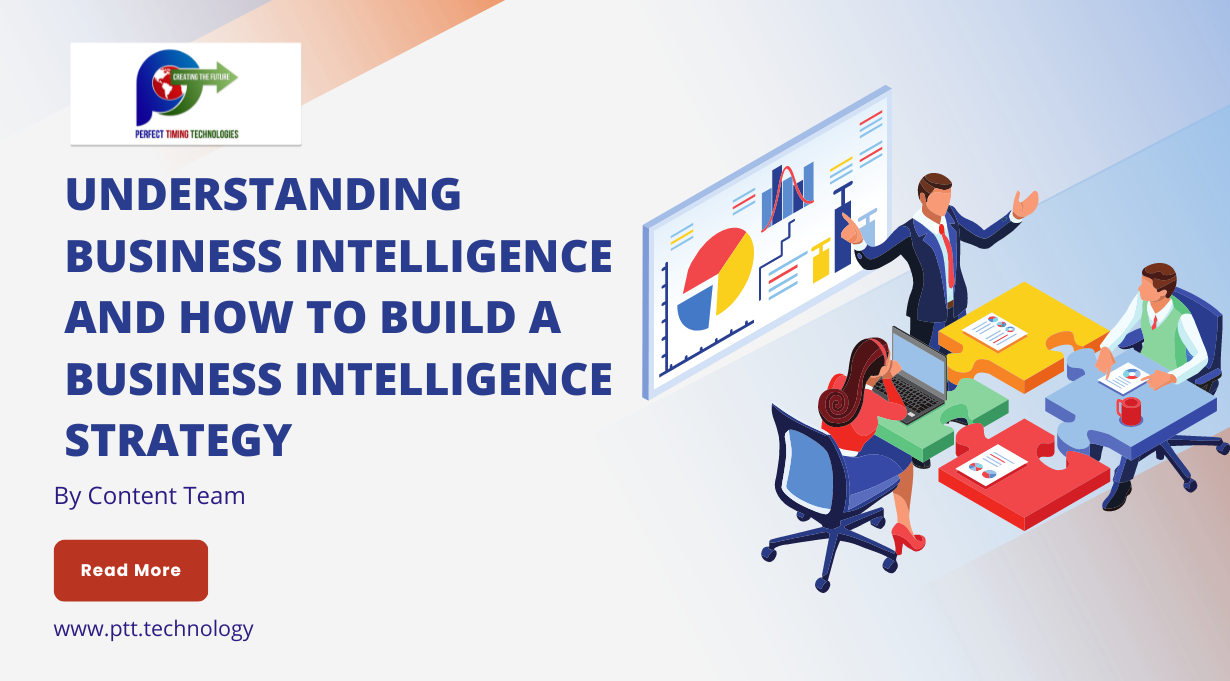
Business Intelligence helps organizations convert raw data into meaningful insights. A company’s success and growth result from a solid Business Intelligence strategy.
This article shall deal with the understanding of Business Intelligence and ways to build a Business Intelligence strategy.
What is Business Intelligence?
Business Intelligence or BI refers to the procedures of collecting, analyzing, and transforming data into meaningful insights for making informed business decisions. The goal of BI is to help organizations gain a better understanding of their operations and performance, identify trends and patterns, and make data-driven decisions.
Business Intelligence specializes software tools and applications that enable organizations to extract data from various sources, including databases, spreadsheets, and other digital systems. Next, the data gets transformed and organized, making it easier to analyze and visualize.
Some popular BI techniques include data mining, data warehousing, dashboards, and reporting. Data mining involves using statistical algorithms to discover patterns and relationships in large datasets. Data warehousing includes storing and organizing data in a centralized repository accessed and analyzed by different users. Dashboards and reporting tools provide visual representations of data that make it easier to understand and analyze.
What is a Business Intelligence Strategy?
A business intelligence (BI) strategy is a plan that outlines how an organization will use data analysis and reporting techniques to gain insights and make better-informed decisions. The strategy typically includes goals, objectives, and tactics for collecting, analyzing, and using data to improve business performance.
A successful BI strategy requires a clear understanding of the organization’s business goals and objectives, and an assessment of the data sources and tools available to support those goals. It needs a strong focus on data governance and quality to ensure accurate and reliable information is used for analysis.
The critical components of a BI strategy may include the following-
- Identifying key performance indicators (KPIs) that align with business objectives.
- Selecting the appropriate tools and technologies for data analysis and reporting.
- Establishing data governance policies and procedures.
- Developing a plan for communicating insights to stakeholders.
A BI strategy is critical for any organization’s efforts to leverage data and analytics to improve business outcomes.
Ways to Build and Implement a Successful Business Intelligence Strategy
Building a successful Business Intelligence (BI) strategy involves several key steps. You must take into account the following steps to implement an effective BI strategy:
- Defining business goals: Start by defining your business goals and identifying the key performance indicators (KPIs) that will help you measure the progress of business goals. It will allow you to focus BI efforts on the areas that matter most to your organization.
- Identifying data sources: Identify the data sources that are most relevant to your business goals and KPIs. It may include internal data from your company’s systems and databases, external data from social media, market research, and industry reports.
- Assessing technology needs: Identify technology tools and platforms required to support your BI strategies, such as data warehouses, data visualization tools, and predictive analytics software. If you do not have an in-house expert team to manage these tools, consider partnering with external service providers.
- Establishing data governance policies: Develop policies and procedures for managing data quality, security, and privacy. It ensures that the data used for analysis is accurate, consistent, and compliant with relevant regulations.
- Developing a BI roadmap: Create a roadmap for implementing your BI strategy, including timelines, resource requirements, and future milestones. It would enable you to stay on track and ensure BI efforts sync with your business goals.
- Communicating results: Finally, establish a process to dictate insights and results to stakeholders of the organization. It would involve creating dashboards and reports that provide real-time data visualization, regular updates and presentations to key decision-makers.
Final Thoughts
BI is a powerful tool for businesses of all sizes and industries, helping them to gain valuable insights and make informed decisions based on data rather than guesswork.
Organizations can build a successful BI strategy that helps them make better-informed decisions and drive better business outcomes.
By taking a strategic approach to BI, organizations can unlock the full potential of their data and gain a competitive edge in their industry.







